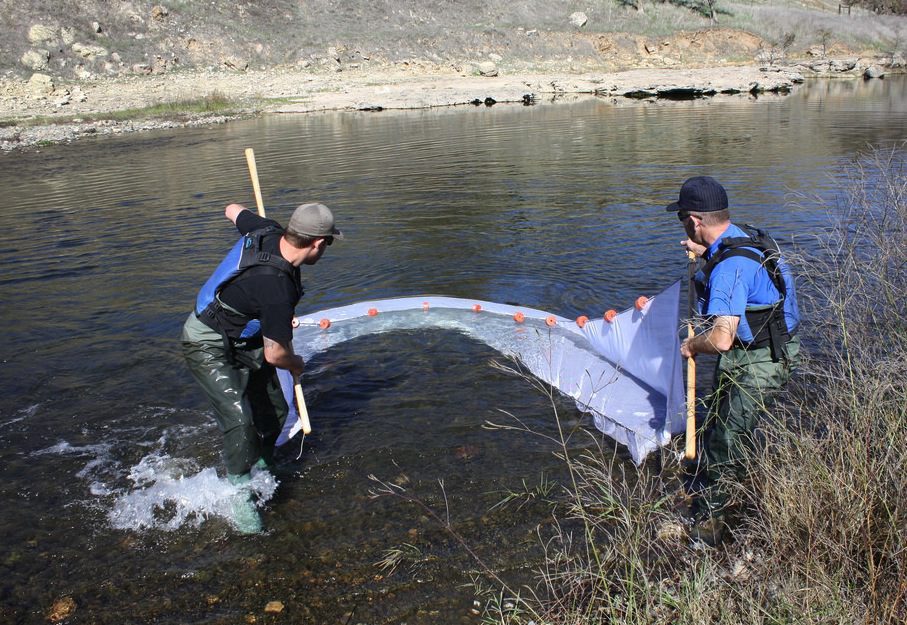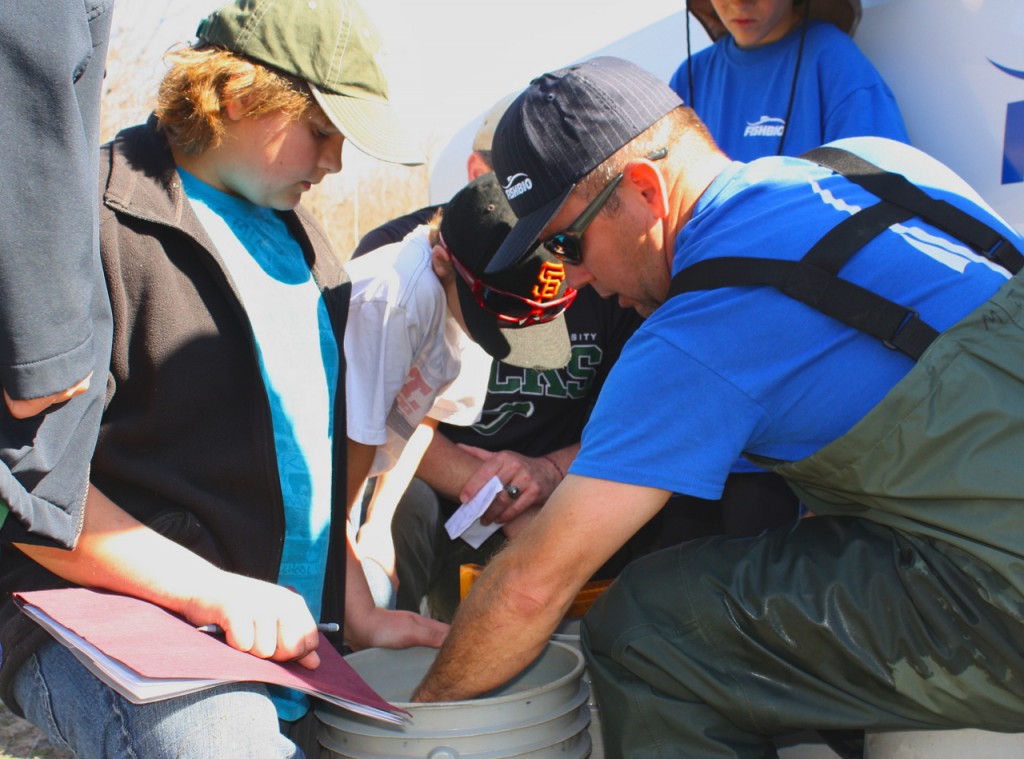Friday March 7, 2014
We at FISHBIO believe that good science goes hand in hand with public outreach and education. So when Turlock Irrigation District biologist Pat Maloney requested our aid in giving a seining demonstration for his Salmonids in the Classroom 4-H project, we jumped at the opportunity. We met with the small group at an area below La Grange Dam and conducted a mock seining survey.
Seining is a sampling method that allows us to collect general population data on species of interest in a given area without having to use conventional trapping methods. A seine net can vary in length and height, but is typically fixed to two poles on either side of the net. The net has small lead weights attached to the bottom edge to keep it against the river bottom, so fish cannot escape underneath. Foam floats attached to the top to keep the net from folding over. The technicians work together to walk downstream the length of the site, close the net, and process their catch (see Heave-Ho).
During the demonstration, the group was given a short presentation on the salmon lifecycle, as well as the type of habitat salmon prefer for spawning and rearing. The group was also allowed the opportunity to process the catch, which involves measuring fish lengths and weights, and filling out their own datasheets. The group was also informed on how to classify salmonid life stages using morphological characteristics. To conclude the field trip, we had an open discussion on careers in fisheries and the importance of conducting field studies. Through events like this, we hope to encourage the next generation of fisheries biologists.


